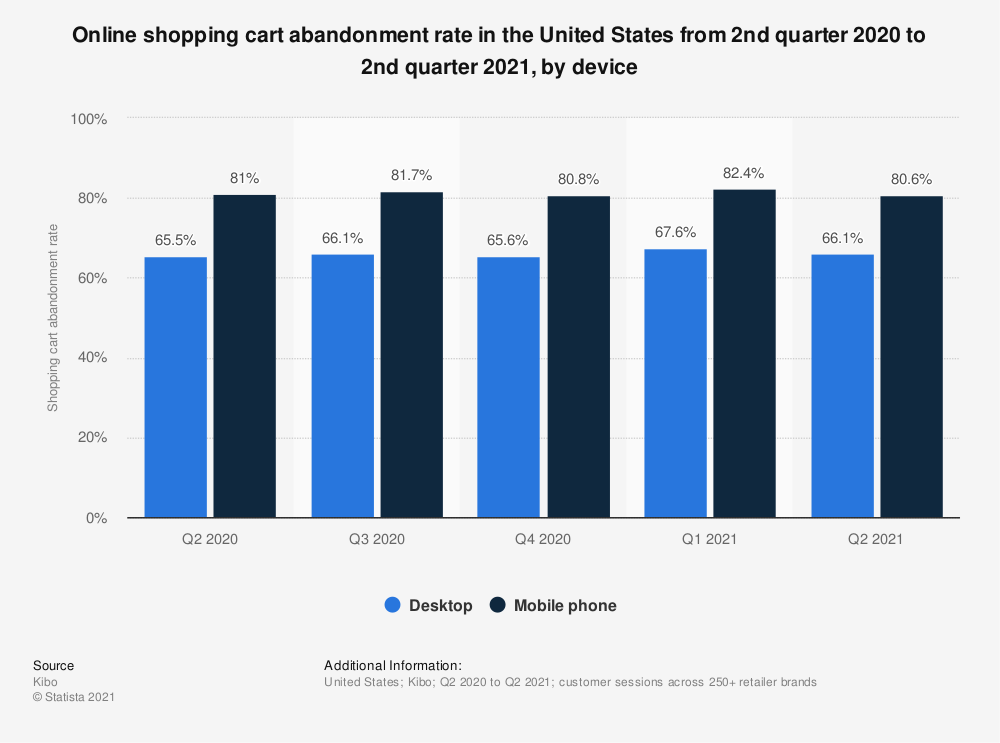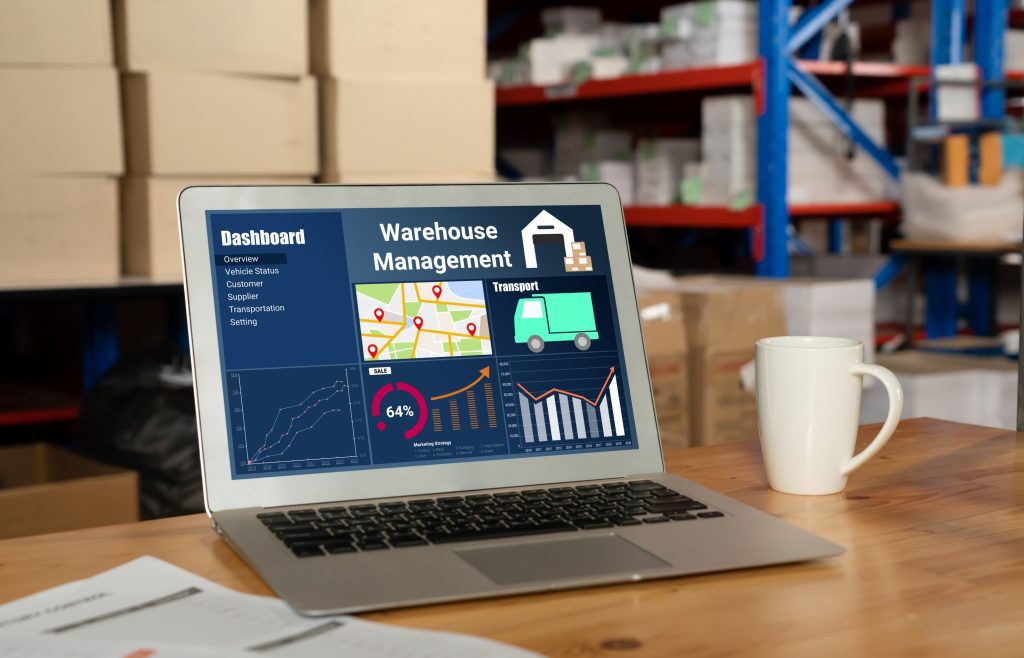
5 Ways to Leverage Automation for Your Ecommerce Business
By Sakshi Arora
Sep 7, 20217 min read
The number of online users is increasing at a rapid pace and eCommerce automation is the only solution to meet the needs of a growing audience. For many teams, it is already difficult to perform autonomous and repetitive tasks throughout the day. By implementing automated solutions to your eCommerce operations, your team can utilize their time to pursue other aspects of business growth.
Direct involvement on the eCommerce platforms might seem fulfilling but it ultimately inhibits business scalability. After conducting thorough research you can determine which tasks should be delegated and which can be enhanced with automation.
Here are five areas where you can leverage eCommerce automation to be able to focus on other strategic tasks:
Cart Abandonment
Cart abandonment rates are a major issue for every online business. There can be many factors like unexpected shipping costs or maybe users were just window shopping. Through eCommerce automation, many of these abandoned carts can be turned into complete transactions.
Automated tools can help you reach out to them through emails. Automated cart abandonment emails are sent in response to an abandonment trigger action. Shopify and BigCommerce offer cart abandonment emails that can be configured to meet your site`s needs.
Time is of the essence and the first email needs to be sent within an hour of a cart’s abandonment. If the user doesn’t engage, then you can reach out to them with a secondary reminder within a few hours followed by a final reminder within 24 hours.
Do not go overboard with the emails as whenever users receive more than three emails, they are bound to flag you for spam. Make use of an eCommerce automation software during certain stages of a buyer’s journey to make a customer complete a purchase.

Abandoned cart emails also help in improving the conversion rates of visitors who left unwillingly due to technical issues. Customers feel valued if a brand approaches them and thus reaching out to them can improve the chances of future purchases.
Multiple email marketing platforms offer cart abandonment emails and can be easily incorporated into your eCommerce website with ease. These eCommerce automation systems are better equipped to help sites that have large traffic that cannot be monitored manually.
Social Media
For the highest traffic flow, a foothold in multiple platforms is necessary. Social media is no exception and is the best way to connect with modern-day users. Ideally, posting on one social media profile might not be a tremendous task but doing so on multiple platforms isn’t easy.
Moreover to stay ahead of the competition the key would be consistency. Irregular or lack of social media updates will not captivate users. Users are likely to forget such profiles unless it delivers constant updates to be within their minds.

Tools like Hootsuite allow you to post updates on multiple platforms from a single dashboard. This cuts down on the time needed to post updates. Instead of updating manually every day, these eCommerce automation solutions let you schedule updates for the whole month in a single sitting.
Another benefit of these eCommerce automation tools is that all the social media platforms get updated simultaneously. Tools like Hootsuite and Buffer are very helpful in utilizing peak traffic hours without the possibility of delays. However, as you deal with automation, do not forget to engage with your followers regularly.
Customer Service
Customer service is a very demanding sector and you need to implement eCommerce automation features carefully as it involves a lot of user interaction. Using partial automation is a good option for such cases as it fosters eCommerce automation without the complete elimination of manual aspects needed to deliver excellent customer service.
Customer service can be improved upon using eCommerce automation tools by streamlining customer interactions. With automated support options, it cuts back the need for direct engagements, thus reducing workload and resolving issues more efficiently.
Support tickets are also a useful customer service automation feature. They can be sorted according to their priority levels by the website and assigned automatically to the respective brand. Support tickets don’t get mixed with all email requests and are easier to find.
By eliminating the need for email filtering, the support team can identify issues and resolve them faster. However, customer support automation services do not guarantee conversion. The benefit of these eCommerce automation services is that they offer customer assistance without the need for an agent.
Inventory Management
Inventory management might not require eCommerce automation tools during the initial stages but you will need them as the eCommerce business scales up. Since you need to monitor a large number of goods/services, it is impossible to update everything manually.
Poor inventory management may lead to orders placed on out-of-stock products. It leads to multiple complications and refunds, which leads to a bad user experience, making inventory updates an important aspect that should not be overlooked.

There are many cloud-based eCommerce automation software that updates the inventory based on the transactions completed. You can also configure them to consider returned products and checked-in products for real-time inventory management.
Enhance the functionality of these features by pairing them up with other automation configurations. You can also focus on enhancing eCommerce business growth with multichannel selling and sell products from multiple online stores.
There are a few exceptions when dealing with inventory management automation for discounted products. Offers or freebies need further configurations to avoid any confusion. A certain amount of manual work is negligible compared to taking on the inventory management for every product.
eCommerce Businesses owning multiple warehouses can implement multisite synchronization. You can also get segmented reports based on location and the number of platforms with your automation tools.
Accounting
Similar to inventory management accounting should always be in perfect sync with completed transactions. Maintaining this requires the purchase information input from respective eCommerce automation features.
If the company starts feeling the accounting duties are getting out of hand then it is time to implement automation to do the heavy lifting. Even professional accountants can go so far with manual accounting and need robust tools to maintain records and do tax evaluations.
Configure the eCommerce automation programs to streamline processes between store, inventory, and other respective accounting applications. Linking these processes ensures that the accounting is complete with the least human interaction.
Accounting is very important for every eCommerce business and any errors in the numbers can be extremely problematic. Do not write off professional accountants as their experience is valuable as well. They are informed about tax codes and government regulations and can restrict automation services from making such errors
Conclusion
Every eCommerce business wants to scale up and needs to automate every possible area of its eCommerce business to cater to a growing audience. Automation eliminates the need of spending several hours on numerous repetitive tasks.
Let your marketing teams focus more on strategic tasks and create ideas instead of errors in mundane tasks that can be dealt with using automation.
It is time to start working towards your brand’s growth and ascend your revenue to the next level. Our team at Growth Natives can help you scale your eCommerce business by helping you implement automation solutions optimally.
Our experts share decades of experience between them and will help you pick the right eCommerce automation solutions that are best suited for your eCommerce business needs.
To know more about getting started with eCommerce automation solutions, email us at info@growthnatives.com or visit our website.




